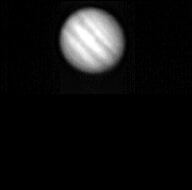
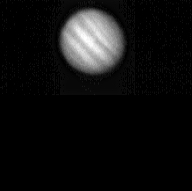
(Left) 0.01 second exposure, SBIG ST-4 CCD. (Right) Combination of 2, 0.01 second exposures.
May 5, 1998. SBIG ST-4 CCD.
12" f/18 cassegrain telescope at prime focus.
1998 was my first attempt to use a CCD; an ST-4 autoguider in imaging mode. After trying deep-sky imaging for a few nights, I tried using it to image planets and I was fairly pleased with the results, especially when I had been having considerable problems with the chip frosting over. (Eventually I managed to bake the which stopped the problem.) Although the seeing was quite good, the large pixels of the ST-4 reduced the detail that could be imaged. Still, it was a useful exercise and showed the promise of this new technology.


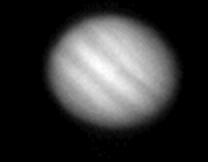
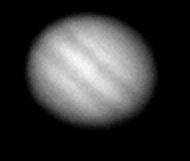
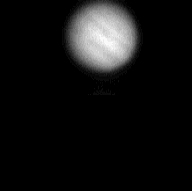
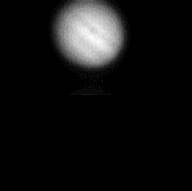
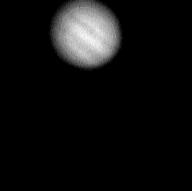
On this night the large pixels of the ST-4 and the poor seeing, combined to reduce the detail that could be imaged. However some detail can be seen including the Great Red Spot, located near the left hand edge of the South Equatorial belt. It is most easily visible in the third image.
By 1999 I had my own CCD, a Meade 416xt that had 9 micron pixes. This was much better for planetary imaging, although by now I was busy having fun using it to image deep-sky objects! As a result I only took a few planetary images.
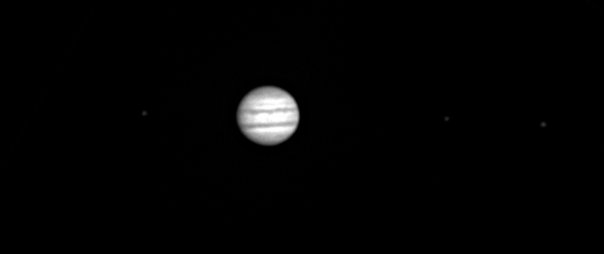
The three moons visible are Io, (left) Europa and Ganymede (far right).